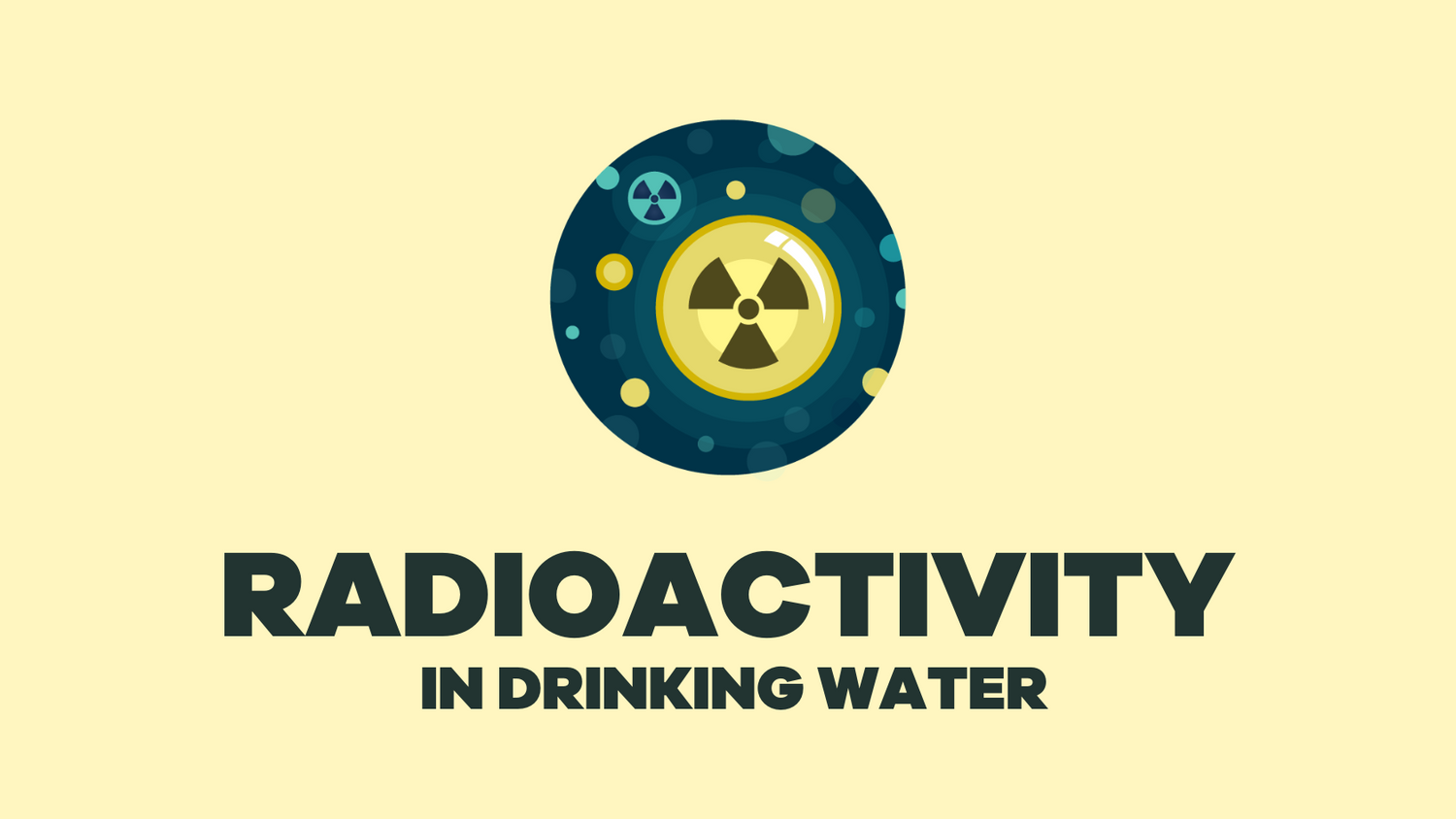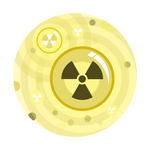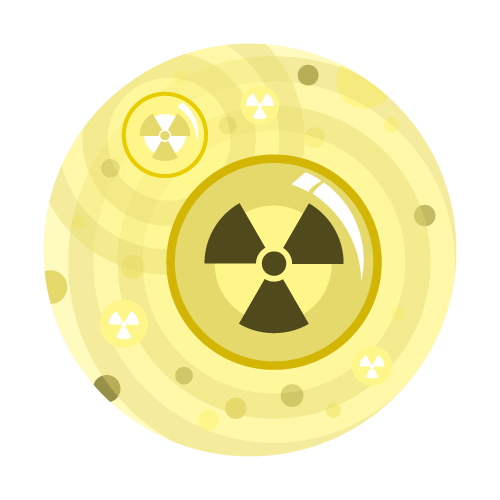
Is My Water Radioactive?
Our blog is written by real experts— not AI. Each guide is carefully reviewed and updated based on the latest research. Plus, with no affiliate links, you can count on unbiased insights you can trust.
Radioactive particles, or radionuclides, are a part of the natural world and they exist in plants, animals, and even water. Increased exposure to radiation occurs when nuclear power plants, mining operations, or laboratories release radioactive materials into the environment. Radiation can cause irreparable damage to your body that stays hidden for years, or even across generations.
Because radiation in the environment (particularly in drinking water) is far more common that most people know, we'll explore the following:
- What Is Radioactivity?
- Can Water Be Radioactive?
- How Do Radioactive Particles Affect Your Health?
- Can You Test for Radioactive Particles in Water?
- How to Remove Radioactive Particles from Water
- What’s the Takeaway?
What Is Radioactivity?
Radioactivity is “the act of emitting radiation spontaneously.”
“Radiation” refers to any process that emits energy in the form of electromagnetic waves or particles, such as light or sound. When we talk about radioactive particles, we are specifically referring to ionizing radiation. Ionizing radiation is radiation that causes an atom or molecule to lose electrons and become charged–this charged molecule is called an ion.
Types of Ionizing Radiation: What Are Alpha and Beta Particles?
Radioactive particles are present in rocks and soil, which usually serve as the path to enter groundwater. The two types of radioactive particles present in water are alpha and beta particles.
What Are Alpha Particles?
Alpha particles consist of two protons and two neutrons. Common examples in water are radium-226, radon-222, uranium-238, polonium-210, and lead-206.
Alpha particles cannot penetrate skin from the outside. However, when consumed, they are active inside your body and can cause damage.
What Are Beta Particles?
Beta particles are radioactive particles made up of one electron or positron. Common examples in water are strontium-90 and potassium-40.
Beta particles can penetrate the top layer of skin and cause burns. Beta particles likely cause more damage inside the body than alpha particles, as they have more energy and are smaller than their alpha counterpart. Subsequently, beta particles can therefore travel farther into body tissue than alpha particles can.
Can Water Be Radioactive?
Yes. Water can become radioactive when it has been contaminated by naturally occurring radiation and additional radioactive particles from rock formations near mining sites, nuclear power plants, or laboratories.
Radon, in particular, occurs in gaseous form in soils and can dissolve into groundwater or enter homes as a gas through the basement. Exposure to radon in air is far more dangerous than radon in water. However, high levels of radon in drinking water may be indicative of elevated radon in air, and may be cause for concern.
How Do Radioactive Particles Affect My Health?
Unfortunately, the effects from radioactive particles in water can cause cancer and can even lead to fatal complications. While our skin can protect us against alpha particles in the environment, exposure to radiation through water is particularly dangerous because radioactive elements damage tissues and organs.
Radioactive particles cause damage by breaking chemical bonds in molecules that can drastically alter our body’s ability to function. If a group of cells crucial to bodily function dies, the effects can be fatal.
After the bonds of normal cells in the body are broken, they release electrons. This can create a chain reaction that can eventually impact DNA molecules. Mutations are consequent to DNA damage, which lead to cancer. And, if germ (sex) cells are mutated, the cancer can be transmitted to children long after the initial exposure.
Can I Test Radioactivity in Water?
Yes! You should test your water for radioactive particles because unfortunately, there are no obvious signs of radioactivity in drinking water. They cannot be seen, smelled, or tasted.
While the Environmental Protection Agency (EPA) sets standards for radionuclides for public drinking water systems, well water is entirely unregulated. Additionally, well water has a much higher risk for radioactive contamination.
What Are the EPA’s Standards for Radioactive Contaminants in Drinking Water?
Because radioactive particles can cause cancer, the EPA has determined that there is no safe level of radiation in drinking water. As a result, the health-based Maximum Contaminant Level Goals (MCLGs) for radionuclides—including alpha particles, beta particles, radium 226 and 228, and uranium—are set at zero.
However, the enforceable Maximum Contaminant Levels (MCLs) for these contaminants are:
- Alpha particles: 15 pCi/L
- Beta particles and photon emitters: 4 millirems per year
- Radium 226 and 228 (combined): 5 pCi/L
- Uranium: 30 µg/L
Note: The EPA does not set MCLs at zero because it is not always feasible for utilities to achieve such levels. Instead, the MCLs are set at the lowest values that can be reasonably reached with current treatment technologies.
Although radon is another potential source of radioactivity in drinking water, it is much more concerning in air. The EPA does not currently have an MCL or MCLG set for radon in drinking water.
Does Well Water Contain Radiation?
65% of wells tested as part of a national study contained radioactive radon at concentrations about the EPA recommended threshold of 300 picocuries per liter (pCi/L), according to a report conducted by USGS.[2]
From testing collections specifically designed for radiological concerns or broad panels for overall water quality health, Tap Score’s high-precision laboratory water testing packages can help diagnose any issues that may be lurking in your tap water.
Not sure what testing package to choose? Tap Score’s Full Radiation Water Test is the most popular way to test your water for alpha and beta particles from any source—including radium, radon, uranium, strontium, and more. While each of these contaminants can be tested for specifically, the Full Radiation screening test is advised unless you already know that there is a specific problem.
Full Radiation Water Test
Test your drinking water's alpha and beta radiation levels.
Even if there are radioactive particles found in your water, there is hope. Every Tap Score water test includes unaffiliated and personalized treatment recommendations based on what is detected in your water sample. Our team of treatment experts, chemists, and water quality engineers can walk you through how to treat your drinking water so that you know that what you are drinking is safe.
How To Remove Radioactive Particles from Water
While there are many popular treatment technologies on the market, the type of treatment you choose depends on what type of radiation problem you have. There are two primary treatment options for radioactive particles in water—activated carbon filters and ion exchange:
- Activated carbon filters are one option for removing radium and strontium from drinking water. However, if radon is also present the filter must be changed very frequently; carbon can adsorb radon and lead to higher radiation exposure if radon is left to build up. As radon particles accumulate, they may fall out of the filter and back into the water stream.
- Ion exchange can be used to treat uranium. However, ion exchange creates backwash that contains high concentrations of radionuclides, which makes disposal a concern. Ion exchange involves passing water through a resin composed of small, charged beads that act like magnets which attract and hold on to compounds of opposite charge, removing these compounds from the water.
Ultimately, the most suitable filtration device depends on what type of radiation problem you have. That’s why we always recommend you test your water before you treat it.
Whether you are concerned about lead and arsenic, bacteria and pathogens, or radiation, knowing exactly what’s in your water is critical to choosing the best filtration system for your water. Different contaminants respond to treatment technology in various ways and there’s no real “one size fits all” solution.
What’s the Takeaway?
- Water can become radioactive when it has been contaminated by naturally occurring radiation from rock formations and soils near mining sites, nuclear power plants, or laboratories
- Because well water is entirely unregulated, well water has a much higher risk for radioactive contamination. Tap Score’s Full Radiation Water Test is the most popular way to test your water for alpha and beta particles from any source—including radium, radon, uranium, strontium, and more
- There are two primary treatment options for radioactive particles in water–carbon filters and ion exchange. Ultimately, the most suitable filtration device depends on what type of radiation problem you have. That’s why we always recommend you test your water before you treat it.
For our full range of Tap Score specialized tests: take a look here, as well as our broad testing packages for city and well water!












